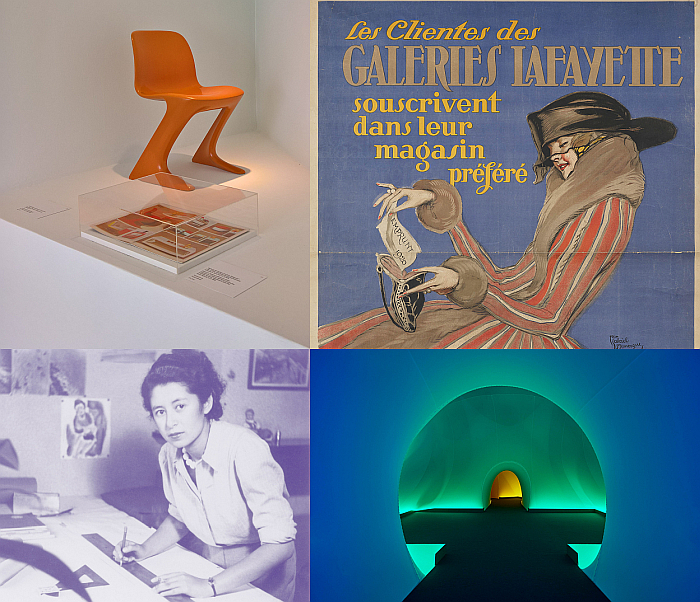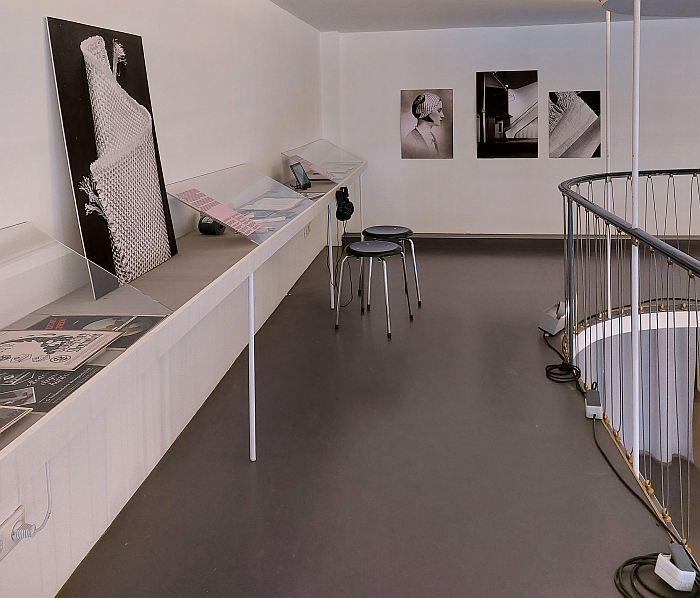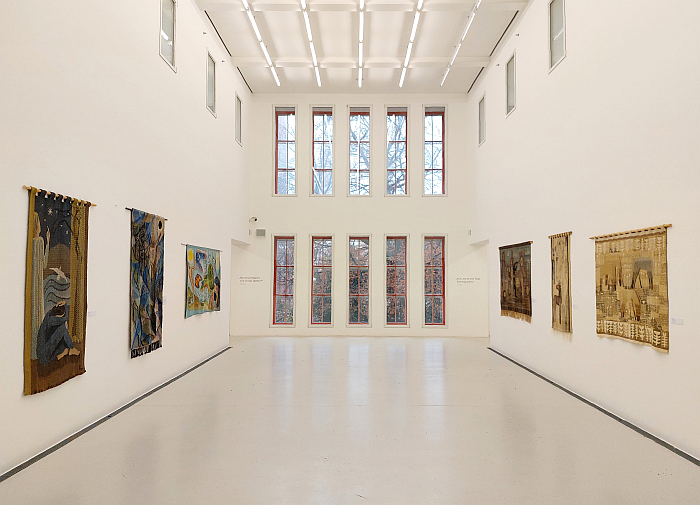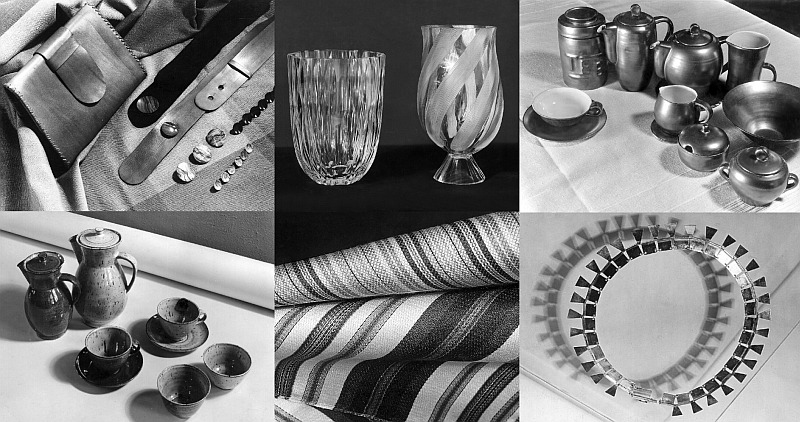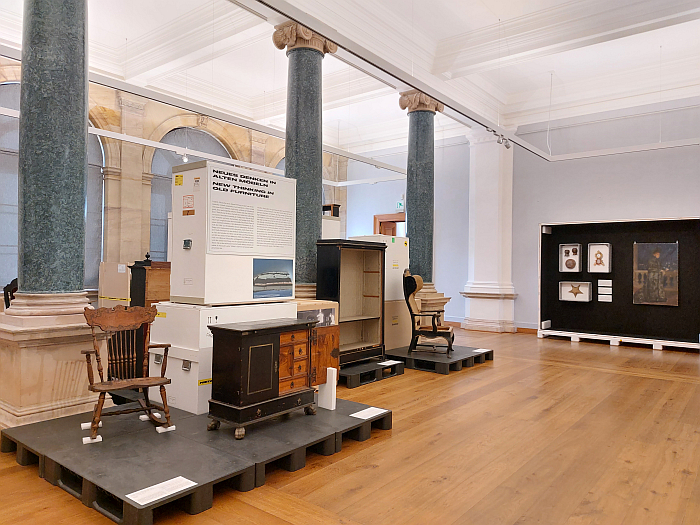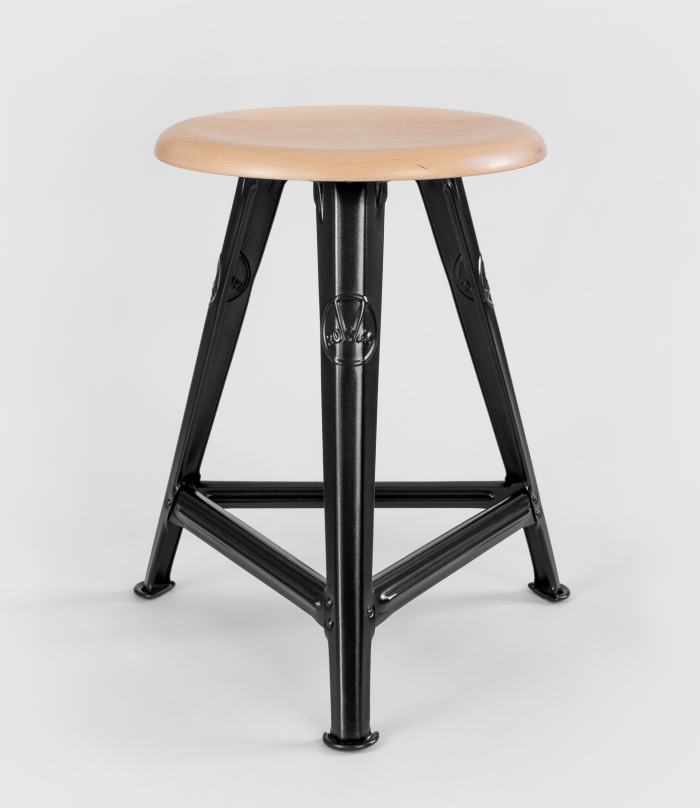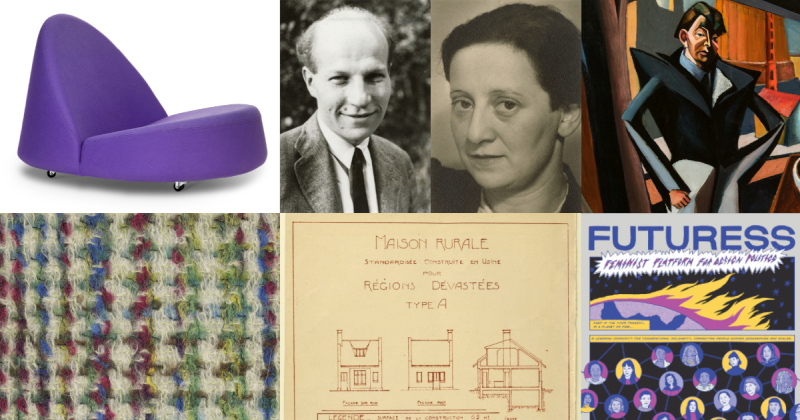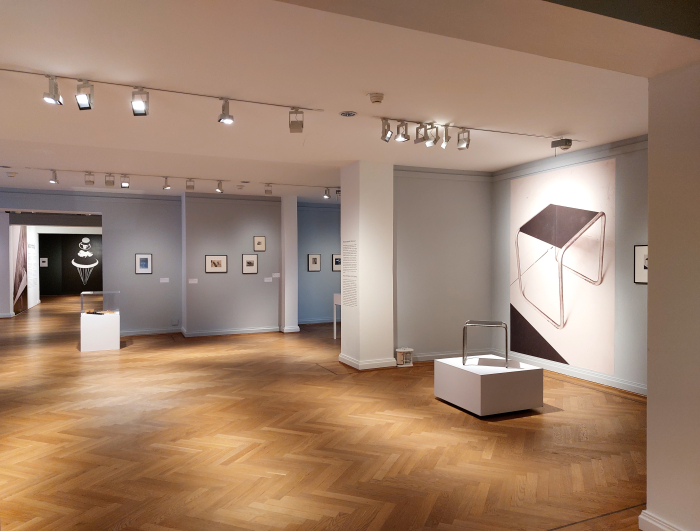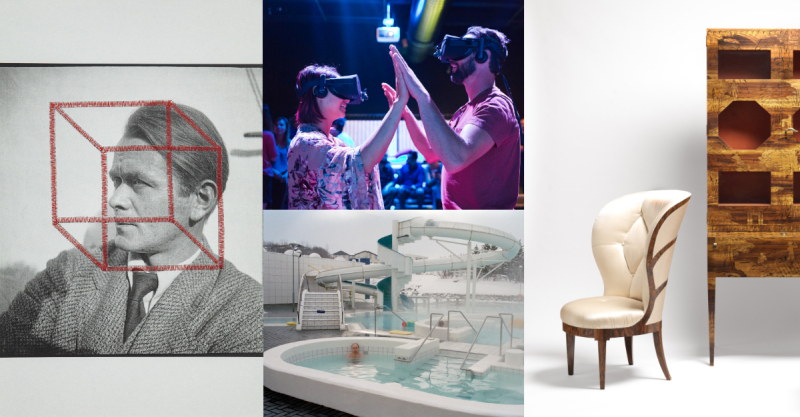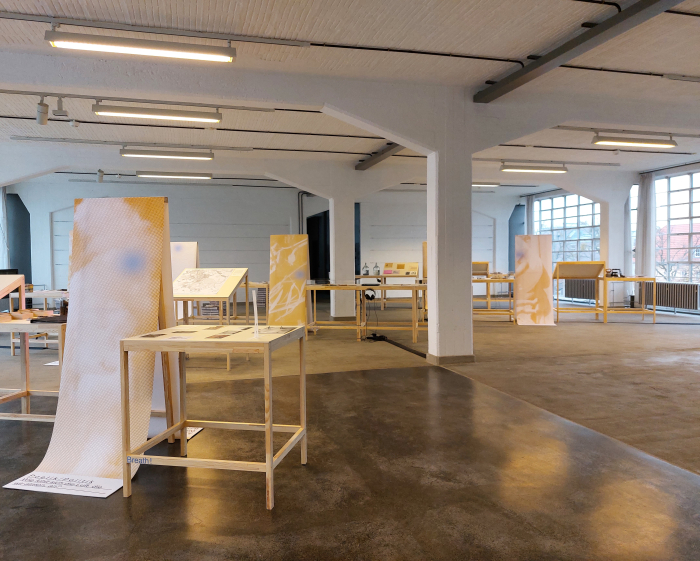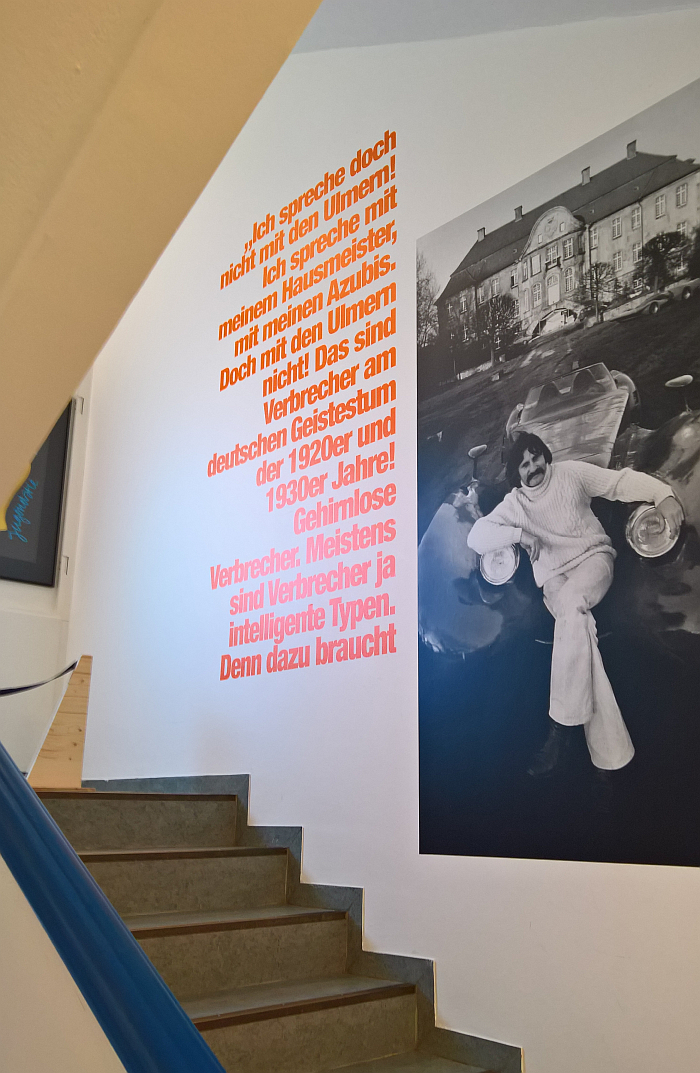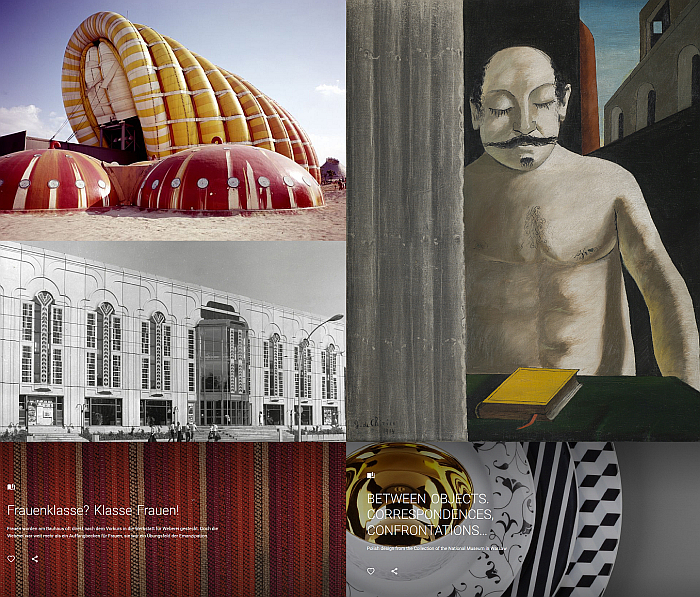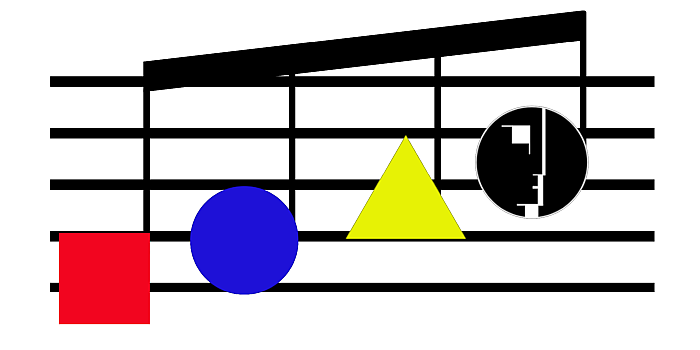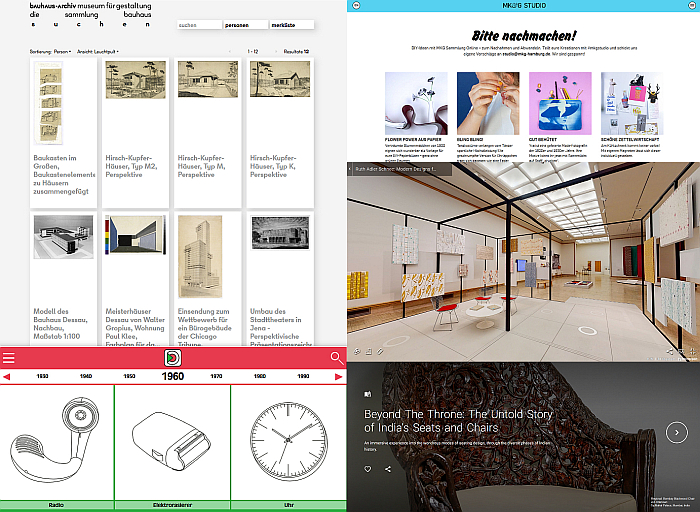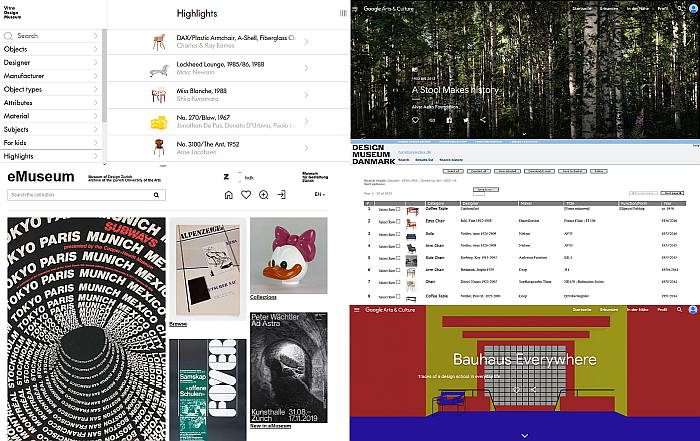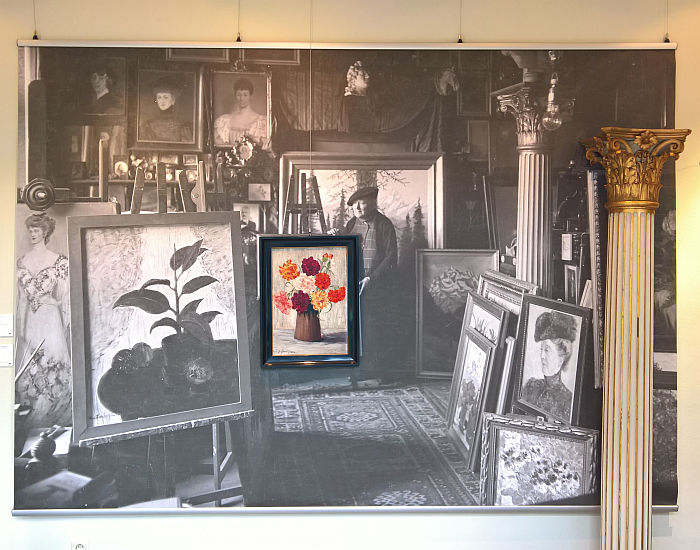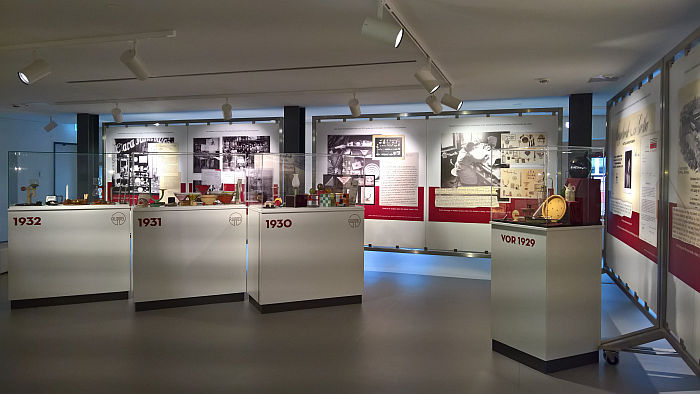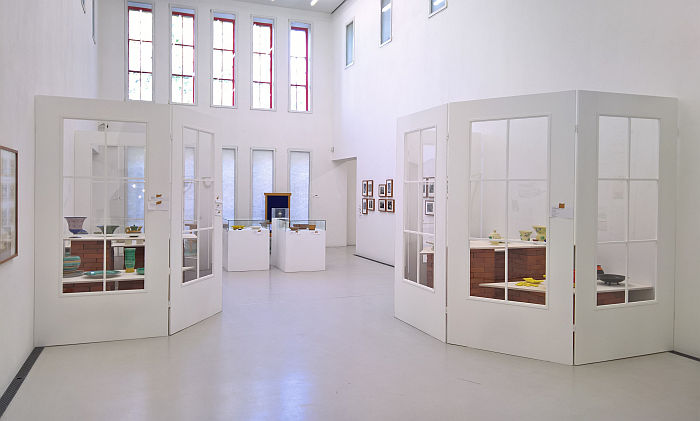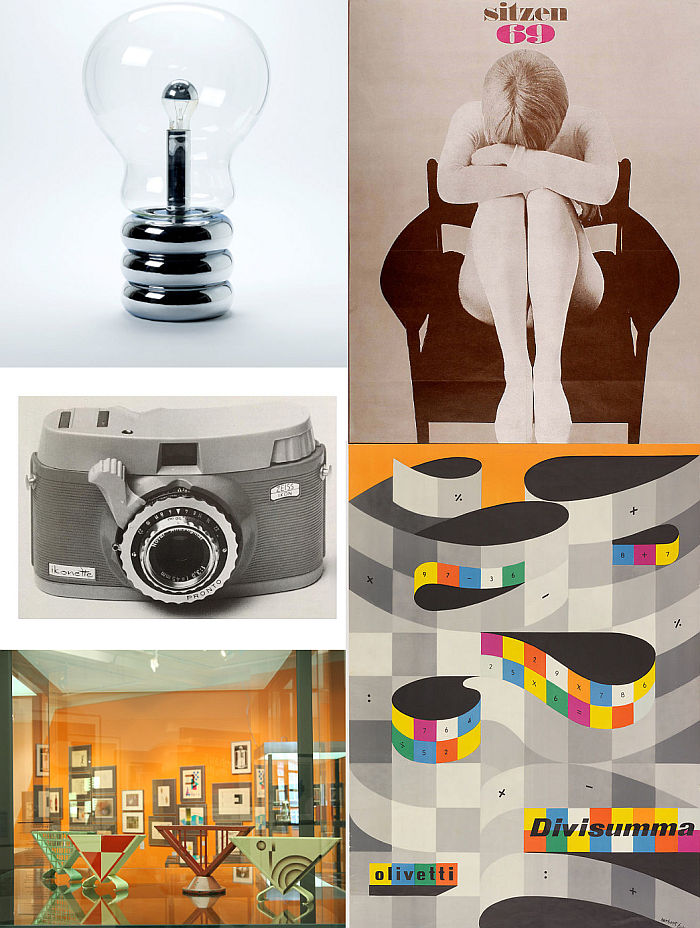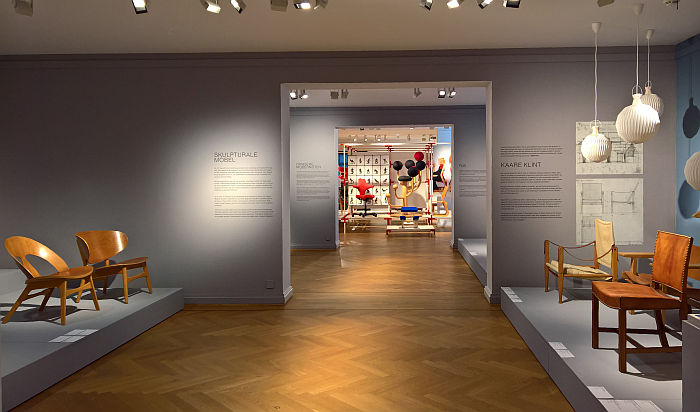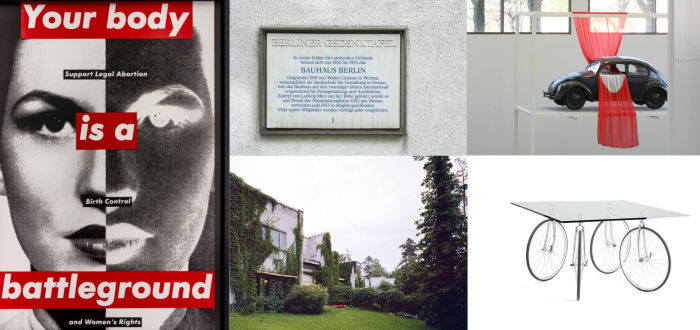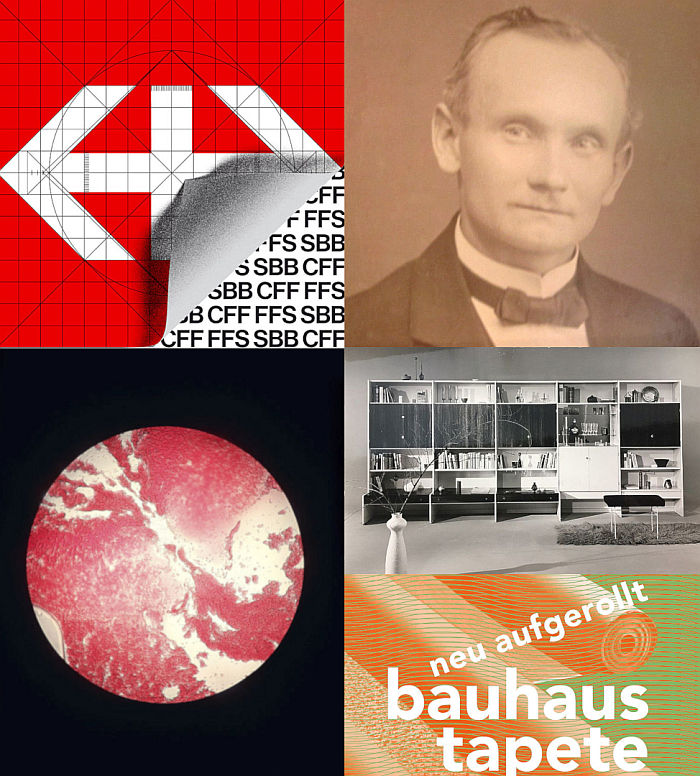Lucia Moholy: Exposures at Kunsthalle Praha
“The word ‘document’ which in the last few generations stood, and in many regards still stands for, papers relating to legal matters, such as deeds, contracts, affidavits and certificates, has in present-day professional usage reverted to its original meaning as derived from its Latin origin”, opined Lucia Moholy in 1948, “and now applies to spoken, written, printed and other materials, produced and distributed for the purpose of imparting knowledge”.1
With Lucia Moholy: Exposures Kunsthalle Praha allow one to approach a better understanding that for Lucia Moholy the most important “other material” of documentation was photography, and employs Lucia Moholy’s photography, and her spoken, written and printed material, to enable an imparting of enhanced knowledge of Lucia Moholy and on the (hi)story of 20th century creativity…….
Bauhaus and National Socialism at Klassik Stiftung Weimar
From the Bauhaus Museum Weimar you can see the Buchenwald concentration camp; from the Bauhaus Museum Weimar you can exactly locate the violence and inhumanity of the NSDAP.
However from Bauhaus Weimar and Bauhaus Dessau and Bauhaus Berlin locating the NSDAP is a lot less straightforward; from the Bauhauses seeing the NSDAP is not as simple, the view towards the NSDAP being as it is partially hidden, lightly distorted, unfocussed, by the mists of an unquestioned post-War narrative. And that despite, or perhaps exactly because of, the various and varied links between the Bauhauses and the NSDAP.
With the exhibition programme Bauhaus and National Socialism the Klassik Stiftung Weimar enable a much clearer view on not just the NSDAP from the perspective of the Bauhauses, but also allow for more nuanced reflections on a still astoundingly relevant, if often incompletely discussed, chapter in European (hi)story…….
5 New Architecture & Design Exhibitions for May 2024
As all around, certainly all around here in Europe, the world blossoms and blooms into life, as colour and variety and vitality abound, it’s strange to remember that just a few short weeks ago everything was so barren, monochrome, desolate.
Not least in context of the global architecture and design museum community: how hard we had to labour to achieve anything approaching what could justifiably be termed a ‘list’ of new architecture and design exhibitions.
Similarly it’s hard to imagine that in a few short weeks we will once again be in a position of scrubbing around looking for new exhibitions worthy of mention.
But spring and early summer are months of abundance, months where new exhibitions are waiting to be harvested, months to take advantage of while the going is good. We could have published two lists for May 2024, decided however to stay with the one; would however very much encourage you all to visit, at least, two lists worth. If not more. Get your fill while you can.
Our 6 recommendations for new exhibitions opening in May 2024, our starting points for May 2024, take us all to Berlin, Prague, Jyväskylä, Milan, Brussels and Weimar…….
5 New Architecture & Design Exhibitions for April 2024
As Letitia Elizabeth Landon so very, very, nearly wrote in 1823,
Of all the months that fill the year
Give April’s month to me,
For the architecture and design museums are then so filled,
With sweet variety!
Our sweet variety in April’s month of 2024 can be found in Dessau, Brussels, Rome, Paris and Dresden…….
Otti Berger. Weaving for Modernist Architecture at the Temporary Bauhaus-Archiv, Berlin
“To meet the needs of a living architecture,” opined Otti Berger in 1930, “we need clarity about what fabric is, and further, what fabric in space is”.1
With the showcase Otti Berger. Weaving for Modernist Architecture the Temporary Bauhaus-Archiv, Berlin, allow one to begin to approach appreciations of what both Otti Berger understood as fabric, “and further, what fabric in space is”, and in doing so not only enable differentiated perspectives on Weaving and Modernist Architecture but allow Otti Berger to begin to retake her place on the helix of design, and architecture, (hi)story……
Else Mögelin. Ich wollte, gegen alle Hindernisse, weben at the Brandenburgisches Landesmuseum für moderne Kunst, Dieselkraftwerk, Cottbus
“Why are you studying in the pottery?”, enquired Paul Klee of Else Mögelin in 1921 after seeing her paintings of the village of Dornburg, home of the original Bauhaus Weimar pottery workshop, “these watercolours look as if they are designs for tapestries”.
With Else Mögelin. Ich wollte, gegen alle Hindernisse, weben the Brandenburgisches Landesmuseum für moderne Kunst, Cottbus, explain and explore what happened next, and thereby help introduce an interesting and informative, if all too popularly anonymous, 20th century creative…….
Campus Grassimesse
For all that the annual Leipzig Grassimesse is and always has been as a sales fair, a place to peruse, discourse with and purchase, contemporary craft, applied art and design, and thereby an opportunity to support contemporary craft, applied art and design practitioners, or perhaps more accurately an opportunity to support those practitioners whose practice you most enjoy, it has also always been a platform for creative schools and their students to present their works and approaches and positions; the inaugural Grassimesse in 1920 featuring students from the Staatliche Kunstschule für Textilindustrie Plauen, the Kunstakademie Düsseldorf, the Kunstgewerbeschule Magdeburg, the Kunstgewerbeschule Nürnberg and the Handwerker- und Kunstgewerbeschule Halle, the latter an institution who in their various guises since 1920 have been more or less ever presents at the Grassimesse.
And will be present at the 2023 Grassimesse where, as Burg Giebichenstein Kunsthochschule, Halle, they will present current projects alongside students from the Kunsthochschule Weißensee Berlin, the Universität der Künste Berlin, HAWK Hildesheim, the Hochschule Wismar, the Staatliche Akademie der Bildenden Künste Stuttgart and the Alchimia Contemporary Jewellery School, Florence.
Yet for all that schools have always been a pillar on which the Grassimesse stands, they are one that can be all too easily overlooked amidst the perusing, discoursing and purchasing. Thus ahead of the 2023 edition by way of helping reinforce that the Grassimesse is more than the selected exhibitors and their works, we thought we’d take a brief moment to reflect on some of those schools who’ve graced the halls of the Grassi Museum, and thereby allow for reflections on both the (hi)story of creative education and also on the Grassimesse as a platform for schools and a coming generation of creatives as much as one for those creatives currently practising…….
Klassik Stiftung Weimar Theme Year 2023: Wohnen
In context of the 1923 Bauhaus exhibition in Weimar, that first wide-ranging presentation of the school, its work and its understandings of itself and the world in which it existed, the institute presented with the Haus am Horn by Georg Muche and its interior, furniture, fittings and accessories by the likes of, and amongst others, Erich Dieckmann, Alma Buscher, Otto Lindig, Benita Otte or Marcel Breuer, a synopsis of the prevailing understandings of and positions to domestic arrangements and domesticity amongst the Weimar Bauhäusler.
With their 2023 theme year Wohnen the Klassik Stiftung Weimar take us all back to a century and a bit before Haus am Horn and to understandings of and positions to domestic arrangements and domesticity in the late-18th/early-19th century Weimar of Goethe, Schiller, Wieland, Herder et al.
And also consider possible future understandings of and positions to domestic arrangements and domesticity as we all move towards 2123…….
(smow) introducing: Rowac
The return of an old favourite, and no not (smow) introducing, although Welcome Back!!!, but the Rowac-Schemel, the Rowac stool, a work initially launched in 1909 as one of the world’s first sheet steel furniture objects, a work that once graced not only innumerable industrial workshops, craft ateliers and educational institutes, but the workshops and ateliers at Bauhauses Weimar and Dessau, a work that became lost in the confusions of post-War eastern Germany.
A work returning in 2023, some 80 years after production ended: and that from and in its native Chemnitz.
And via a Kickstarter crowdfunding project.
To find out more we caught up with Alide and Dieter Amick from Rowac…….
5 New Architecture & Design Exhibitions for November 2022
We published our first monthly list of exhibition recommendations on November 1st 2013, one of those short, superficial, posts we used to compose, having as we did back then endless time on our hands; and an intervening nine years that means that with this list for November 2022 we are entering our tenth year of helping you advance your cultural education.
While being very much aware that the vast majority of you have never visited a single one of the circa 450 new exhibitions we’ve carefully and conscientiously selected for your delectation, nor indeed have the vast majority of you visited any architecture or design exhibition in the past nine years: that the vast majority of you have chosen to neglect your cultural education. However, one of the joys of the museum exhibition as a format for elucidation, exploration, energising and entertainment, the reason we don’t give up on you all, is that, the next opportunity is always approaching.
Thus, while that which you have missed is gone for ever, and you’ll just have to try to catch up as best you can; that which is still to come is an opportunity waiting to be grasped. And in November 2022 there is an unusually large and varied amount of opportunities to grasp; the global architecture and design museum community unleashing a plethora of diverse new showcases.
And a plethora of new exhibitions opening in November 2022 that we were simply unable to narrow down to five. It would also have felt unjust given how many new showcases there are.
Our five six new opportunities to advance your cultural education in November 2022 can be found in Leipzig, Edinburgh, Winterthur, Berlin, New York and Vienna…….
Lucia Moholy – The Image of Modernity at the Bröhan Museum, Berlin
“Everybody, except myself, have used, and admit to having used my photographs … and often also without mentioning my name”, lamented Lucia Moholy in 1956, “everyone – except myself – have derived advantages from using my photographs, either directly, or indirectly, in a number of ways, be it in cash or prestige, or both”.1
The photographs in question being of and from the Weimar and Dessau Bauhauses, photos which played, and continue to play, a not unimportant role in mediating Bauhaus to a wider audience. But which in doing such don’t necessarily help mediate Lucia Moholy to that wider audience. On the contrary, they tend to hold her in a relative anonymity.
With Lucia Moholy – The Image of Modernity the Bröhan Museum, Berlin, help explain how such a situation came to be, why Lucia Moholy’s lament is both justified and an important lesson, and also how it relates to popular understandings of Bauhaus.
But for all seek to redress some of the ongoing consequences of that relative anonymity…….
5 New Architecture & Design Exhibitions for February 2022
According to the Roman scholar Marcus Terentius Varro February 7th marks the first day of spring.
Which strikes us, as we’re sure it does you, as a little early; however, there was reason in Varro’s bold claim, for Varro further sets February 7th as the start of the year, and for all links February 7th with the rising of the west wind, a favourable, warming wind, whose arrival indicates the need to start cultivating your land and crops, specifically Varro advises, “these are things which should be done in the first period, from the rising of the west wind to the vernal equinox: All kinds of nurseries should be set out, orchards pruned, meadows manured, vines trenched and outcropping roots removed, meadows cleared, willow beds planted, grain-land weeded.”1
But not just the cultivation of your land and crops is important from the rising of the west wind to the vernal equinox, the cultivation of mind and spirit and character is of equal importance.
Our five non-agrarian cultivation tips for February 2022 can be found in Halle, Garðabær, Paris, Stockholm and Zürich…….
Bauhaus Lab: Vegetation Under Power – Heat, Breath, Growth at the Bauhaus Building, Dessau
There are a great many and varied mediums via which to track the (hi)story of a region, the 2021 Bauhaus Lab chose plants; or more accurately, the 2021 Bauhaus Lab chose the (hi)stories of the flora in the region around Dessau as a medium for explorations of the human, social, industrial, political, economic, ecological, et al (hi)stories of the region.
A telling of a local (hi)stories which enables access to both global considerations on, and questions concerning, our relationships with the planet we require for our existence, and also to differentiated considerations on, and questions concerning, Bauhaus and International Modernism.
Considerations and questions presented in the showcase Vegetation Under Power – Heat, Breath, Growth in the Bauhaus Building, Dessau.
Luigi Colani and Art Nouveau at the Bröhan-Museum, Berlin. Reprise…. Or, Luigi Colani and the HfG Ulm
In context of the exhibition Luigi Colani and Art Nouveau, the Bröhan-Museum Berlin’s staircase is emblazoned with a long quote from Colani, a long and typically outspoken quote, in which Luigi Colani denigrates the Hochschule für Gestaltung Ulm, that design school which has such a prominent and pre-eminent position in popular understandings of design in post-War West Germany; and who for Luigi Colani were “defrauders of the German creative spirituality of the twenties and thirties! Imbecilic criminals.”1
A quote that not only neatly epitomises the (consciously cultivated) Colani communication strategy, nor only leads one to reflect on Colani’s own relationship to inter-War design in Germany, but for all leads one by necessity to question the validity of the accusation; and thereby to reflect on the relationship(s) between the Hochschule für Gestaltung Ulm and the “German creative spirituality of the twenties and thirties”, and by extrapolation to reflect on post-War design in West Germany……..
5 (New) Architecture & Design Exhibitions for January 2021
The only certainty as 2020 flows into 2021 is the ongoing uncertainty. An uncertainty that is increasingly being understood as an ongoing certainty and thereby turning ever more “plans” into “options”.
And also causing a great many global architecture and design museums to skip over the first quarter of 2021 as if weren’t there, and to move their new exhibition openings to April and beyond.
A state of affairs which on the one hand means there are currently fewer lonelier locations than any given museum’s “future exhibitions” listings; but on the other hand means that much as the coldest hour is the one just before the dawn, so it is increasingly certain, as in “old” certain, that the paucity of new exhibitions opening in the first quarter of 2021 will cede to a flood come spring. And so you can now plan, as in old “plan”, to visit an exhibition a day come summer. And still have options. Old and new
And a state of affairs which has to a degree forced our hand and produced a hybrid recommendations list for January 2021: offline exhibitions in Berlin, Hamburg and Metz; online exhibitions from Warsaw and Weimar/Dessau.
And as ever in these times, if you do feel comfortable visiting any museum, please familiarise yourself in advance with the current ticketing, entry, safety, hygiene, cloakroom, etc rules and systems. And during your visit please stay safe, stay responsible, and above all, stay curious…….
Radio smow: A Bauhaus Playlist…….
Bauhaus Weimar’s centenary may now be behind us, but there remains a lot of discussion, consideration and reflection ahead of us. Not least in context of the rapidly approaching Bauhaus Dessau centenary.
By way of an accompaniment to those reflections, considerations and discussions, and of engendering a differing perspective on both the schools and the contexts in which they existed, a Radio smow playlist devoted to music of, from and associated with the Bauhauses.
5 Online Architecture & Design Exhibitions for May 2020
While we’d all much rather physically visit architecture and design museums, our current enforced virtual patronage does allow us all an excellent opportunity to begin to understand architecture and design museums as more than just an exhibition space with shop and café, and to begin to learn to interact with them, and for all their collections, in new, proactive, manners. To understand architecture and design museums as tools as much as institutions.
And while a virtual visit can never replace a physical one, it can help us extenuate and expand our understandings and thereby allow us to take even more from that physical visit. And those physical visits will return.
Until then, volume two of our online recommendations takes you from your sofa to Berlin, Hamburg, Bloomfield Hills, Mumbai, München, and hopefully and awful lot further…..
5 Online Architecture & Design Exhibitions for April 2020
The museums may be closed, travel restricted and leaving your home, when possible, unadvised….. but that’s no reason to restrict your cultural uptake, far less neglect the development of your architecture and design understandings.
Or put another way, if you can’t get to the museum….. let the museum come to you.
Five online architecture and design exhibitions and museum collections to explore from your sofa, bed, garden, balcony, wherever…..
Mathilde von Freytag-Loringhoven. Painter, Author, Animal Psychologist and Bauhaus Critic at the Stadtmuseum Weimar
Looking back from the safety of 2019 it can be all too easy to assume that Bauhaus was a popularly received and much celebrated institution.
❌
From its very earliest days, even before the first students had arrived in Weimar, the institution met with tenacious criticism and steadfast resistance; and arguably nowhere more so than in Weimar.
With the exhibition Mathilde von Freytag-Loringhoven. Painter, Author, Animal Psychologist and Bauhaus Critic the Stadtmuseum Weimar introduce one of the institution’s most tenacious and steadfast opponents; and in doing so allows not only for considerations on some of Bauhaus’s lesser discussed (hi)story, but also for reflections on the political, social and cultural realities of 1920’s Germany……
Inspired by Bauhaus – Gotha Experiences Modernity @ The KunstForum Gotha
Sitting unassumingly, and largely unnoticed, in the middle of Germany, the city of Gotha may have only little resonance with the majority, with the great unwashed; however, every European royal family can trace their lineage back to Gotha: most famously the English royal family through Queen Victoria’s 1840 marriage to Prince Albert, but the royal houses of Sweden, Denmark, Spain, Holland, Norway, you get the idea, can all trace their lineage back to and through Gotha.
Gotha and royalty ✔
Gotha and inter-war Modernism ¿✔?
Unknown Modernism @ the Brandenburgisches Landesmuseum für moderne Kunst, Cottbus
As this Bauhaus Weimar centenary year is making ever clearer, whereas Bauhaus may have been physically sited in Weimar, Dessau and (nominally) Berlin, approaching a better understanding of “Bauhaus” involves leaving those sites and following the many paths that either led to, or from, those sites.
Paths that not only allow one to approach a better understanding of “Bauhaus”, but for all to approach a better understanding of the wider developments of the inter-War years, of inter-War Modernism, and thus to better understand that Bauhaus was but a component of that period, but a component of inter-War Modernism.
And paths, such as those mapped by the Brandenburgisches Landesmuseum für moderne Kunst, that invariably lead to new places, to new understandings and to an Unknown Modernism………
5 New Architecture & Design Exhibitions for November 2019
On November 1st 1512 Pope Julius II celebrated the All Saint’s Day Mass in the Sistine Chapel. The first public presentation of Michelangelo’s frescos, and thereby the opening of a permanent exhibition still on show today. And still attracting a public.
And while permanent exhibitions are good and important, for all in allowing an overview and an introduction to a subject, it is those ever changing temporary exhibitions that, should, ideally, allow for new insights and deepening of understandings.
Our recommendations for five new, temporary, architecture and design exhibitions opening in November 2019, and which promise such insights and depths, can be can be found in Munich, New York, Vienna, Esslingen and Gotha…..
Nordic Design. The Response to the Bauhaus @ The Bröhan Museum, Berlin
Having started this Bauhaus Weimar centenary year by exploring the path from Arts and Crafts to Bauhaus, the Bröhan Museum Berlin end this Bauhaus Weimar centenary year by exploring the path from Bauhaus to Arts and Crafts Scandinavia.
Or more accurately put, by exploring Nordic Design. The Response to the Bauhaus.
5 New Architecture & Design Exhibitions for September 2019
Whereas in the natural world spring ushers in new life but once a year, in the design museum world re-awakenings are biannual: a spring spring as curators awake from their winter hibernation and an autumn spring as they awake from their summer dormancy. Both bringing forth not only the promise of growth, energy, of a new esprit, of new experiences, new sensations, but confirming the eternal nature of existence, that we are but a moment on an endless spiralling continuum…….
Our five new stimulations for September 2019 can be found in Berlin, Helsinki, Weil am Rhein, Stockholm and ‘s-Hertogenbosch…….
5 New Architecture & Design Exhibitions for August 2019
According to our old friend Roget possible synonyms for “August” include great, noble, impressive or worshipful.
We can’t promise the following quintet of exhibitions will exactly meet such qualities; however, they promise to be anything but frivolous, undignified or flighty explorations of their subject, and therefore certainly should be tending to the August in August 2019…….



